Hempcrete Biocomposite Wall Panels
Our biocomposite wall panels are made of hemp fiber and lime binder cast in a wood frame with a steel lifting skeleton. Lime-based plasters (natural plasters) are applied directly to the interior and exterior hempcrete as the finished skin. It's a beautifuly simple assembly. Once tilted up, the wall panels create a PHIUS-compliant, net zero envelope for our market-rate rental units. We can sequester 10.5 lbs of CO2 per cu ft of placed hempcrete.* For example, the walls of the next 12-unit building will sequester approximately 55 tons of CO2.
10 Key Advantages of Hempcrete
Hempcrete biocomposite is a sustainable building material.
Hempcrete biocomposite has exceptional thermal insulation properties.
Hempcrete biocomposite can absorb and release moisture, which helps regulate building humidity levels.
Hempcrete biocomposite is naturally fire-resistant due to the high silica content in hemp fibers.
Hempcrete biocomposite structures are durable and long-lasting. Over time, hempcrete gains strength through a process called carbonation.
Hempcrete biocomposite is CARBON NEGATIVE—only strawbale construction sequesters more Carbon than hempcrete.
Hempcrete biocomposite Prevents the growth of mold due to its high pH.
Hempcrete repels insects and rodents.
Hempcrete biocomposite thermal mass stabilizes interior temperature flux.
Hempcrete biocomposite is a non-toxic material and can be recycled or used as a soil amendment, minimizing waste and promoting sustainability.
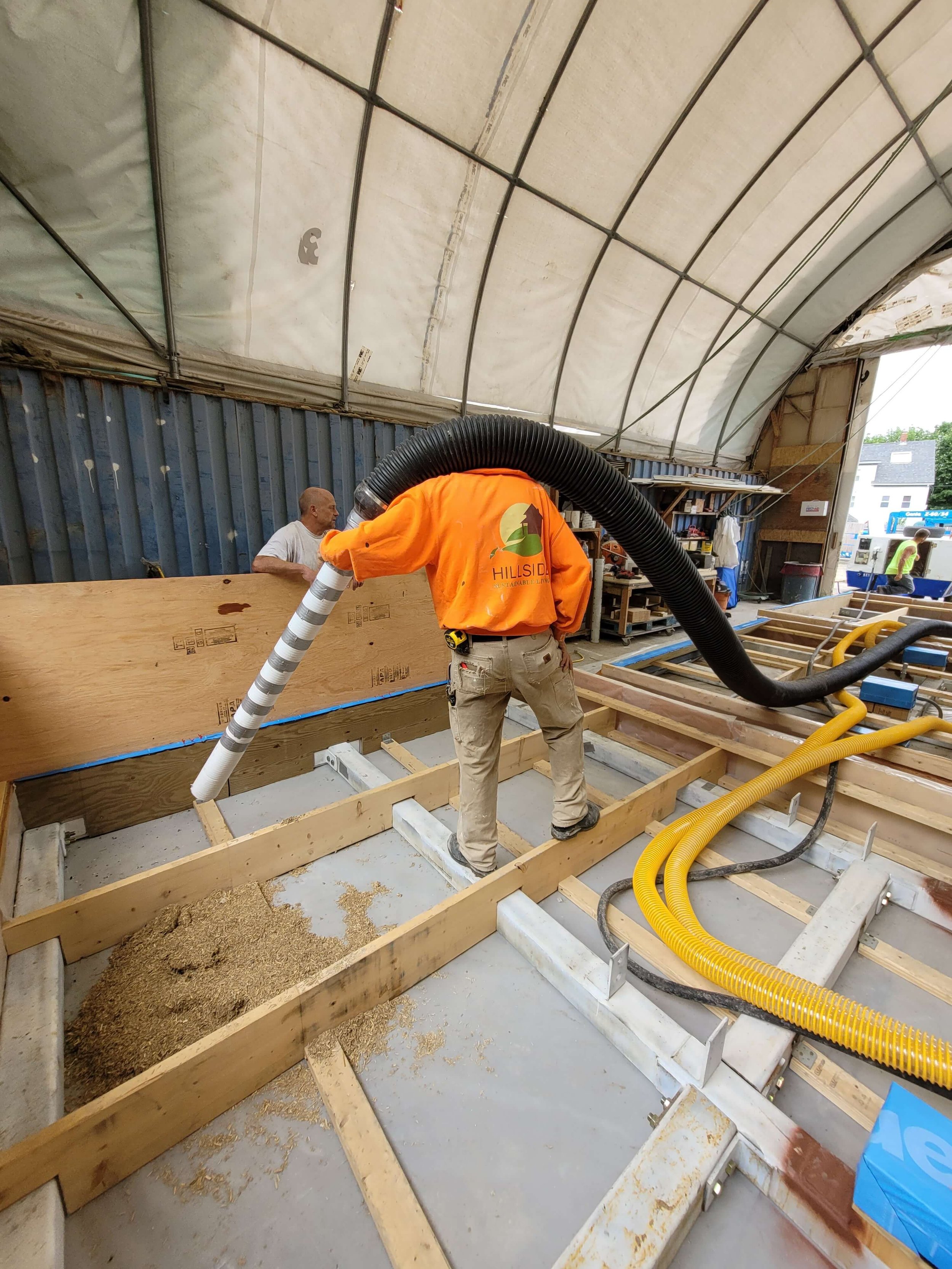
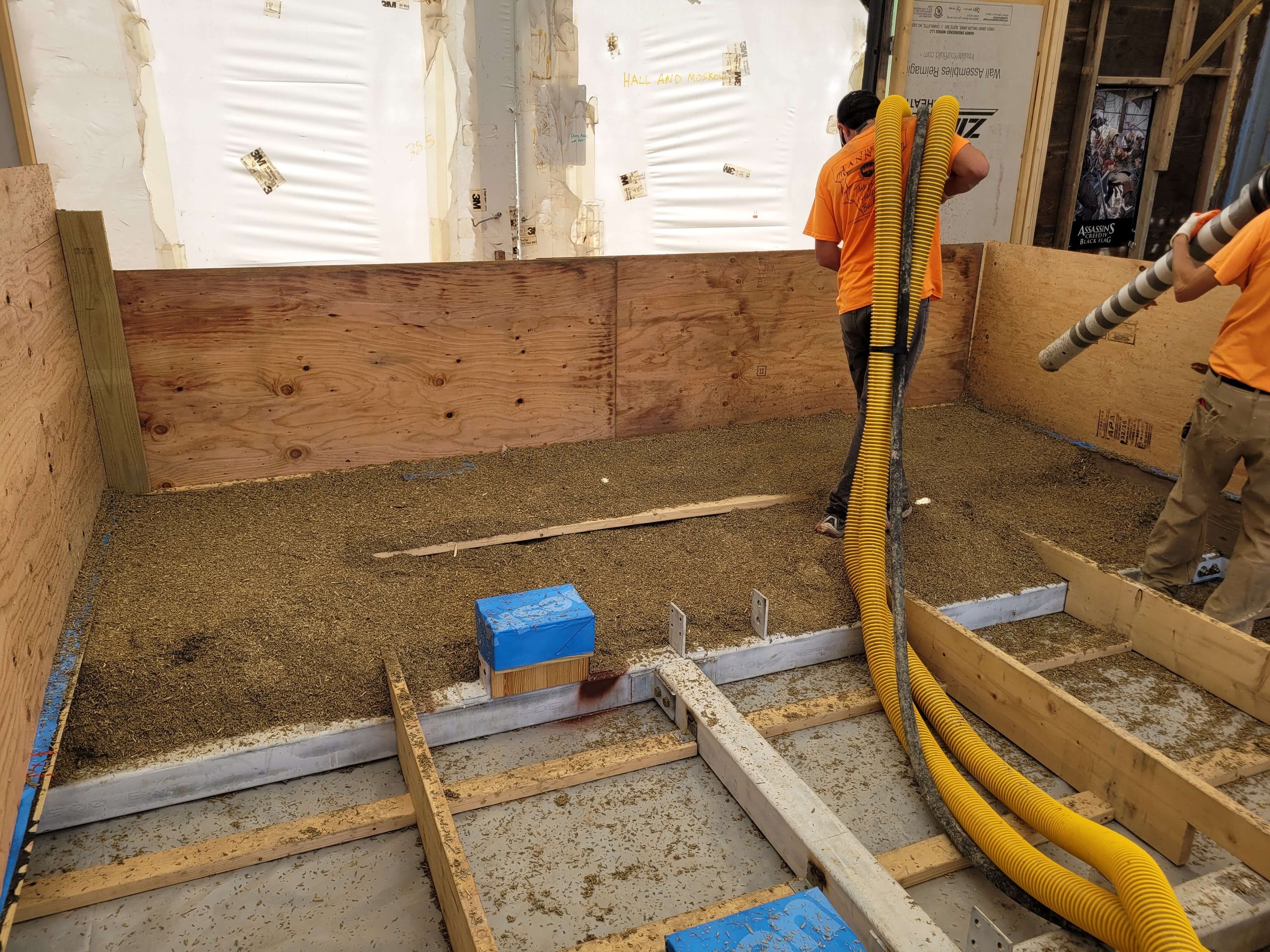
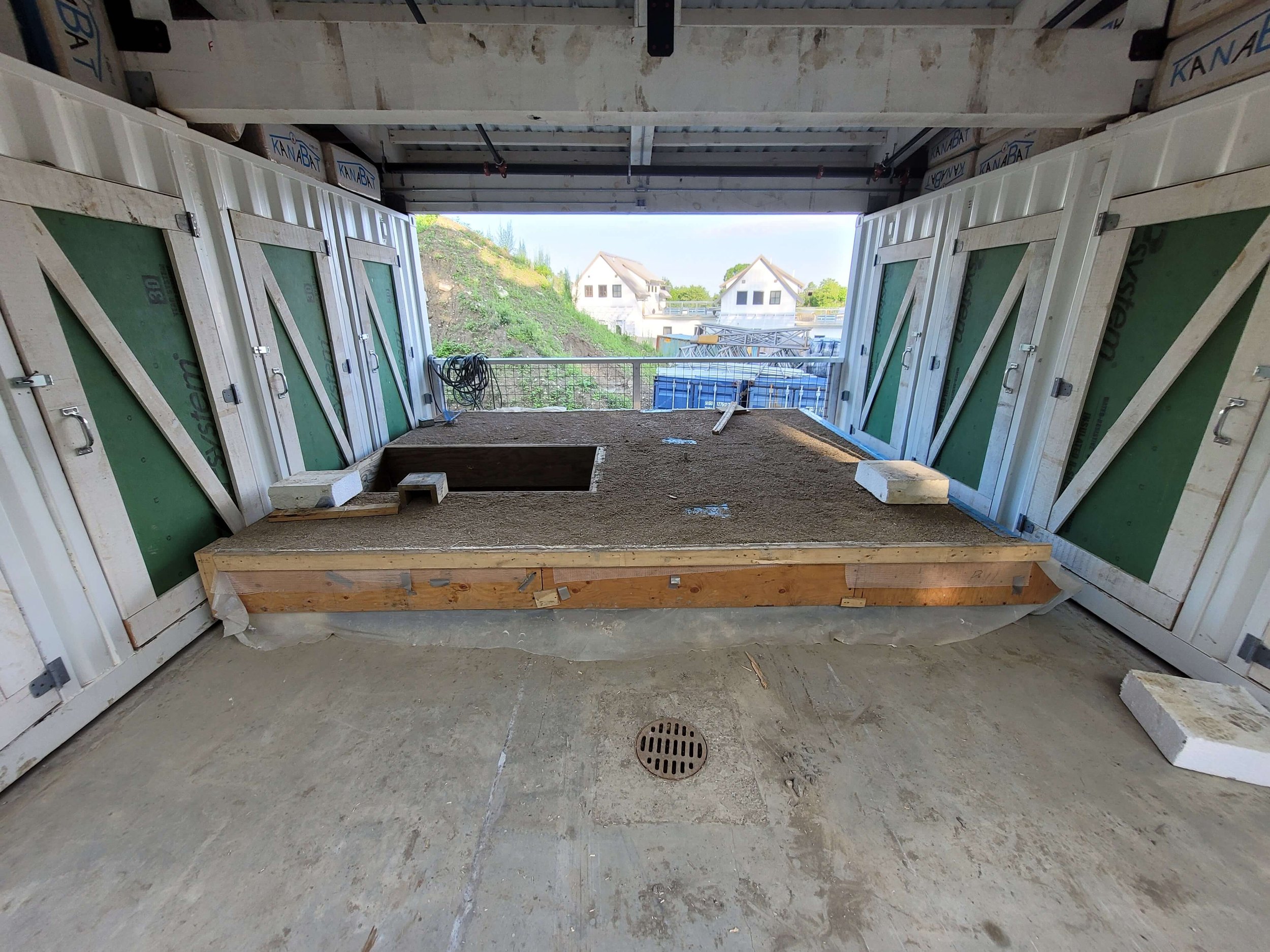
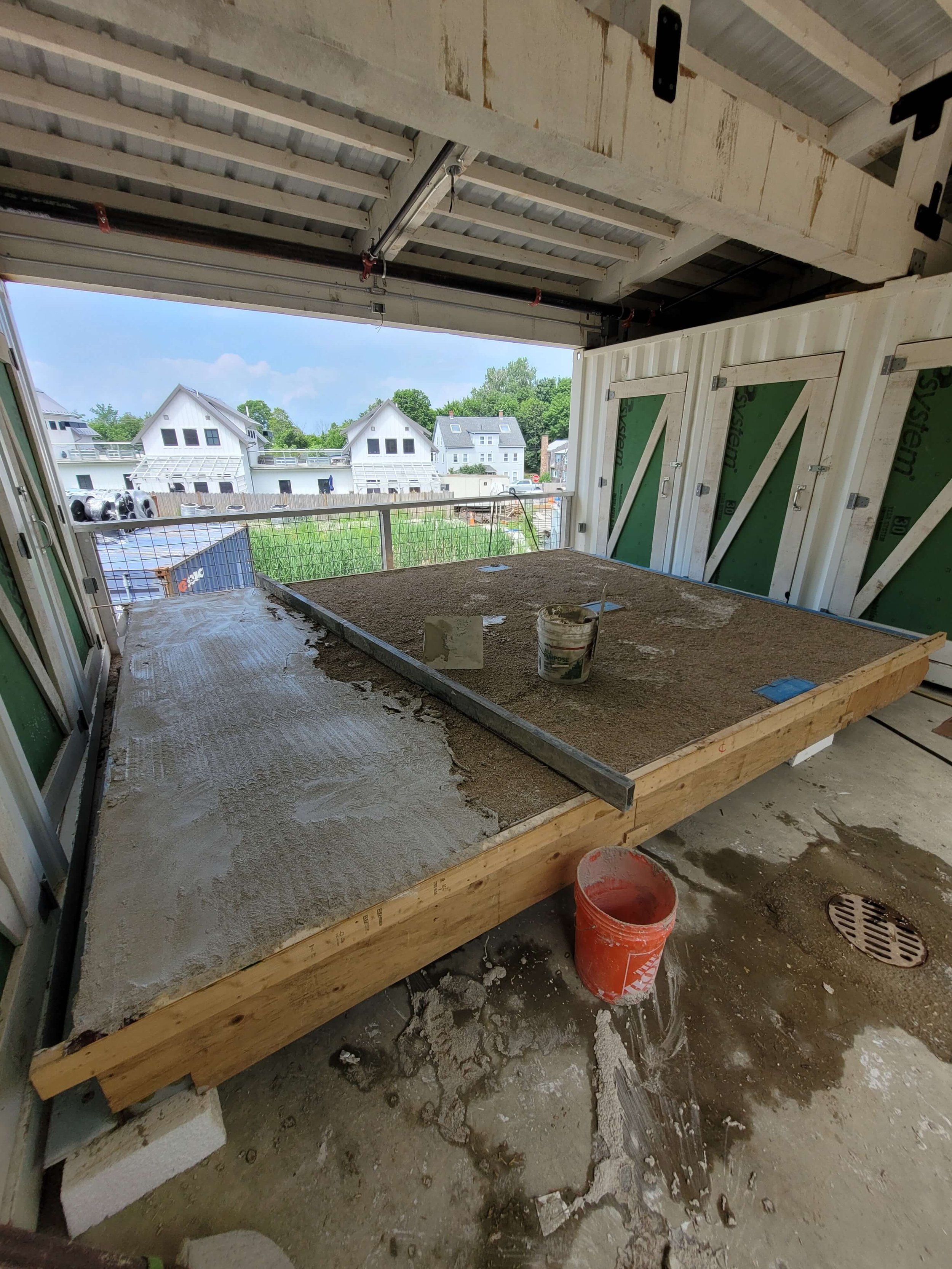
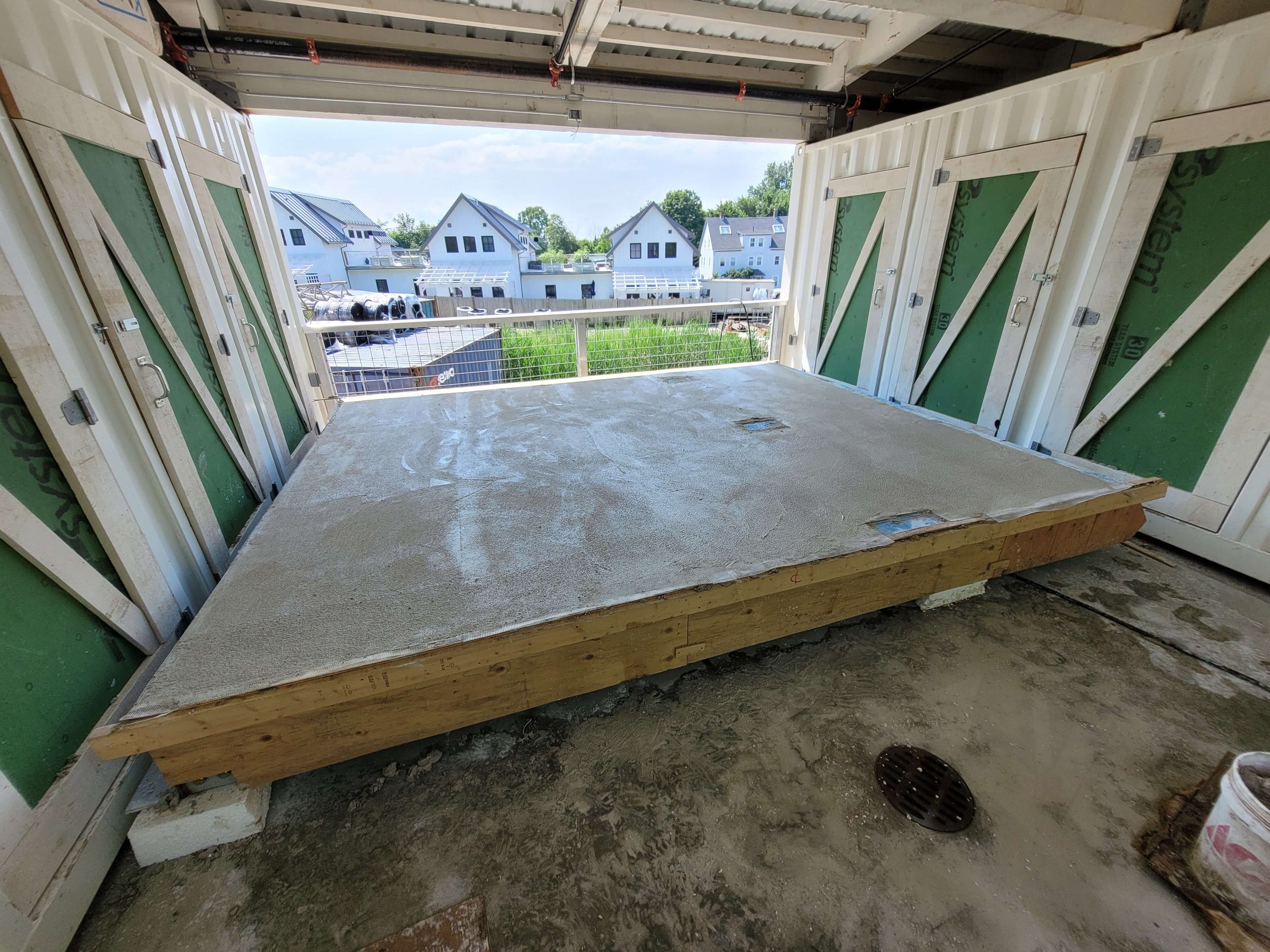
Hillside Center for Sustainable Living is a community-focused resilient multifamily development integrating permaculture land use, net positive PHIUS homes, electric transportation, and water conservation. Besides the profoundly affordable 10 units, which feature a shared kitchen owned and managed by the local YWCA, Hillside provides solar-powered market-rate rental units free of utility cost to the resident. It encourages long-term residency with guaranteed limits on rent increases.
*as calculated by Hudson Carbon Research Institute


